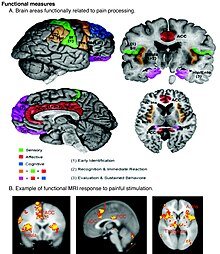Pain and Ways To Ease Symptoms
| The Pain Scale |
Pain is defined as an unpleasant sensory and emotional experience and symptom of an underlying condition. But experiencing pain can be your friend. Why? According to Psychology Today, it is the "body's wake-up call" to pay attention and to reactivate the body sense. We are at attention when we feel the slightest pain. It does call us to perhaps stop lifting items the way we were or to understand the limitations of how many times you can walk the stairs due to your "bum" knee.
Pain is a subject that would/could take an unlimited amount of articles to even begin to understand the subject matter. Each person may experience something different depending on the underlying cause/causes or diseases and course of treatments or approaches or lack thereof.
It Affects Everyone
Pain affects everyone at some point in their lives. Pain, whether it be chronic or acute will affect some 87 million people each year in the United States. That sounds like a staggering number and thankfully some of those people will experience relief once the "injury" has healed or subsided.
Pain is categorized into different types and levels depending on the cause/causes. And it is only then once a diagnosis is made that the approach to a "cure" of treatment can be made. While some people can "learn" to live with different types of and levels of pain, we can also "learn" to be proactive in our treatments; even those with long term chronic issues and diseases.
 |
| Photo Credit: Wiki |
Surprisingly we can learn new methods or change the way we do things or enhance the way we live in order to help ease our pains. Did you know that pain is our body's way of showing stress, and this occurs mostly in our brain. Our brain is in stress and produces the feeling.
There are many holistic (non-drug) ways to help ease the pain. Here's a quick list of ideas to help you with your pain.
Attitude and Endorphins
Did you know the way you feel can change your pain outcome? Did you know that endorphins help reduce pain levels? If they do, how do we get them? Endorphins are produced in the brain and help release a good feeling, and this helps with pain.
*Laughter- yes laughter is a great natural feel-good endorphin. Reports show that when people laugh they reduce about 66% of inflammation than those who didn't.
*Exercise- exercise releases endorphins and increases oxygen levels in the bloodstream on the cellular level. This not only produces good feelings but exercise also pushes blood and oxygen to injured areas to promote healing. Exercise can be as simple as a walk every day; it does not have to be strenuous. Exercise inactivity makes muscles shrink, exercise can help keep that in check.
Serotonin & Oxygen
*Sleep- sleep resets the brain. It is shown those who slept less than 5 hours at night had a higher chronic pain level reported. It has been suggested that those who could try to sleep as much as 8 hours per night not only had lower levels of chronic pain they also added years to their lives! Tip: take a warm bath or shower before bed to help you fall asleep faster and sleep longer.
*Sunlight- sunlight stimulates serotonin. This can stimulate happier feelings, if you cannot go outside at least open the curtains, and taking a supplement has also shown to be effective as well.
*Meditation or deep breathing- brings in more oxygen into the body. Meditation also lessens stress which is fully immediate as we ask our brains to be in less of a stress state.
Adding Great Things Into Our Diet & Removing Harmful Things
Diet is often a number one and an easy thing to fix immediately. Eating well has been shown to help us in so many ways and on so many levels; pain management is just one. Taking out harmful things such as smoking, and alcohol (considered number 1 & 2 of most harmful things).
Add into your diet anti-inflammatory foods such as *cherries. Doctors agree that patients who ate or drank the juice of cherries reduced inflammation by 50%! Add in *Olive oil, it acts like ibuprofen in your system, *walnuts contain anti-inflammatory omega-3, *red beans, kidney beans, and pinto beans packed with fiber and antioxidants, *mushrooms contain vitamin D,*apricots have high levels of magnesium helps with osteoarthritis, and finally, *spices sprinkled on your salad or mixed into recipes can contain COX-2 inhibitors and anti-inflammatory properties such as ginger, oregano, and turmeric.
Protect Yourself With Mindfulness
By being proactive in your life and having awareness of your surroundings and being mindful of your situations can have you in less stress and pain. Being well rested, following guidelines on lifting, eliminating hazards in your home, and finally getting help with something may help to stave off the pain or pain levels.
Coping
Always truly follow what your doctor advises. What is the sense of going to appointments, if once you're at home you don't follow his course of treatment? Ask for help. Keeping a journal can help people release stress as well. It is often found that writing can be a great way of coping.
Support
Asking for help because you have limitations helps you stay out of pain. But joining a support group will help you have less stress as you can discuss with like-people the things that you are going through. Support groups help you have interaction with people because depression and pain go hand in hand, and this group will help you cope with changes and challenges you might have. Investing in yourself and your well-being may be hard at times, but if you put yourself first one can and will help improve the levels of pain you might go through.

Comments
Post a Comment